
43 minute read
Australia Day AFSM recipients
Australia Day 2020 Honours
Congratulations to the two CFA members who received the Australian Fire Service Medal (AFSM) for their work in emergency services.
Advertisement
PETER SHAW Peter has been a CFA volunteer since 1974 and is currently a member of The Basin Fire Brigade and Group Officer for Knox Fire Brigades Group. His record of service, experience and achievements makes him one of the state’s elite in fire and emergency management. Peter, pictured at the Bairnsdale Incident Control Centre, is a CFA life member and received a National Emergency Medal for his role in the 2009 bushfires. An exceptional leader throughout his career in Victoria Police and work with CFA, Peter has developed critical experience in emergency and incident management, major collision investigation and protective security. He is a Level 3 Incident Controller and has distinguished himself by demonstrating outstanding operational ability to manage incidents effectively. Peter is also known for his ability to inspire others and his willingness to go well beyond what’s expected. He’s passionate about improving service to the community. He is currently serving his second term as a volunteer member of CFA’s Board, which recognises his standing among CFA’s volunteer community and his commitment to the future of CFA, the emergency management sector and the Victorian community. While captain of Bayswater brigade, Peter encouraged his members to think about
the specialist roles they could take on that would enhance the operational capability of the group, and he was influential in ensuring a strong working relationship with MFB in delivering high-quality service to their shared community. In his capacity as Knox Group Officer, Peter has made innovative changes that have improved operational capabilities, increased readiness and shortened strike team response during critical periods. Peter said he was honoured to have been nominated and considered worthy to be put up for the award. “It is fantastic to be part of an organisation that has the ability, often at very short notice, to rally from across the state to support each other and the communities of not only Victoria but across Australia,” Peter said. “My appointment to the Board has been a significant highlight of my time at CFA, providing me with the ability to have a role in taking this great organisation forward.”
GEORGE O’DWYER George O’Dwyer is a CFA volunteer and Department of Environment, Land, Water & Planning (DELWP) employee, and a testament to the strength of emergency services working together for the benefit of the community. He has been a CFA volunteer firefighter with Barongarook West Fire Brigade since 1995 and worked for the past 14 years for DELWP. He has carried out the role of public information officer (PIO) in incident management teams since the roles were established after the 2009 Victorian Bushfires Royal Commission. He was the first Victorian officer to achieve the incident management team level 3 PIO status. Since 2005 he has been at the forefront of leading change in Victoria and has actively provided support across CFA, DELWP and Victoria State Emergency Service to build capability in community engagement, warnings and advice, and public information. He has played significant roles in community fire recovery including after the 2005 Mt Lubra fire and the 2009 Victorian bushfires. He demonstrated outstanding leadership, working with community members in Wye River on Christmas Day 2015, supporting evacuation, relief and early recovery. “I’m extremely humbled by the thought of being nominated for the Australian Fire Service Medal and more so for receiving this prodigious award,” he said. “The AFSM is a great honour and I wish to give my respects to my fellow firefighters for their commitment to communities, whether it’s on the fireline or as part of an incident management team. “In accepting this award, I also acknowledge the personal hardship caused through physical demands and mental anguish associated with a bushfire reality, understanding that impacts are endured by many people including firefighters, who never forget, are always reminded, and who just learn to cope at best. This award has much meaning for me personally and professionally. “What keeps me going are the many relationships I’ve developed as part of my CFA and FFMV experiences. These relationships remind me to maintain a clear focus on community aspirations towards safer and stronger communities, with the hope that people will make good decisions because they trust the relationship.”

AFTER THE FIRES: how nature recovers

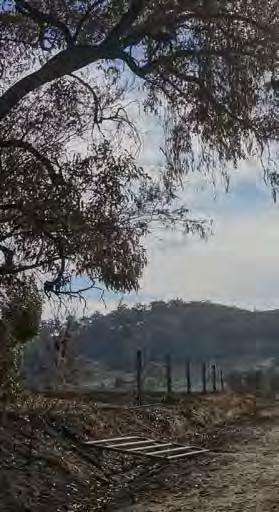
Although severe fires can kill a species of plant or tree, many more will persist and even thrive. Nature is always able to recover from fire. In March 2019 more than 14,500 hectares of bush and open grasslands were burned and homes, sheds and outbuildings destroyed, when lightning sparked a fire in the Bunyip State Forest in the state’s south east. The rolling hills of an area known for its farms and equestrian training centres were left blackened, and the features of the landscape merged into one. The fire killed or damaged most of the plants in its path . However, only seven months later the landscape paints a very different picture – as shown by the photos of the Bunyip fire. Apart from a few telltale signs – a lick of fire on an errant fence paling, a blackened trunk of a tree or a gate not yet rebuilt – you wouldn’t know that fire had ravaged the area. Green shoots extend from the base of trees like recently planted saplings. The landscape is lush and green and the dense valleys at the bottom of rolling hills are a sanctuary for both new and recovered tall tree ferns. Plants have evolved with fire for millions of years. Some trees and plants have adapted to survive fire while others such as the mountain ash depend on fire to germinate and survive. The fire intensity, fire history, and the plant species fire response mechanism will determine if it will survive or die The sapling-like shoots from the base and canopy of burned trees is known as epicormic growth. It’s the plant’s response to damage and the stress caused by the fire. The growth is born from buds that lie dormant beneath the bark, sometimes within only a few weeks of a fire going through. CFA’s Team Leader Vegetation Management Owen Gooding said these dormant buds are an important stage in the healing of the plant or tree, keeping it going until the canopy recovers. “Eucalyptus trees may be great conductors of fire but they’re also great survivors of fire,” said Owen. Like the eucalyptus, other woody species have evolved to protect dormant buds from fire under bark. In nonwoody plants, such as grass trees and tree ferns, the new growing tips are protected from fire by the trunk. “New life also springs from underground,” Owen continued. “Soil insulates parts of plants which can re-shoot after fire.
how nature recovers

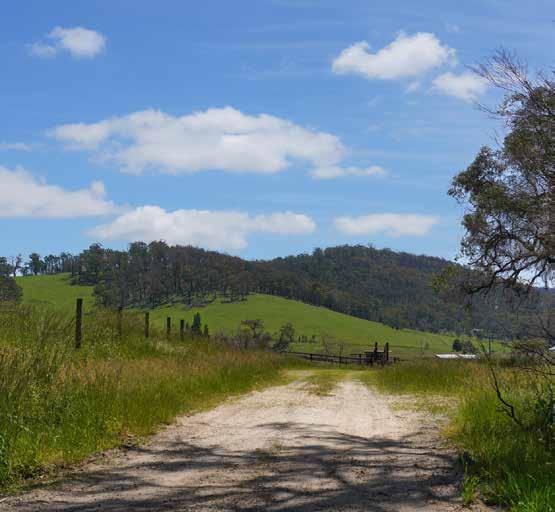
PHOTOS: KEITH PAKENHAM AFSM
Grass, lilies and some ground ferns are often the first signs of life after fire. Other species persist because fire simulates germination of a seed bank that lies dormant in the ground. Some plants are stimulated to flower after a fire. Grass trees are a great example.” Eucalyptus trees have a second mechanism to survive after a fire. They can re-sprout from their roots and the woody swelling at their base called lignotubers. Their ability to regrow and replenish from both beneath the bark and their root systems ensures they grow new leaves and branches within weeks to feed the rest of the tree. Longer fire seasons and the increasing dryness of the landscape means habitats will always be changing. We need to be prepared that this change may not always be what we want or expect. “A fire’s footprint is a shape on the map, but we know that the areas burned within that footprint are patchy. The fire intensity varies and some areas are not burned. It’s these patches that plants and animals use as a home base of sorts to repopulate and persist,” Owen said. Fire is a disturbance that can change the diversity of species. If the fires are too frequent in an area, individual plants may not mature and there’s a risk of a species dying out locally. The patchier the fire landscape the greater diversity of animal and plant species because there are more opportunities for a species to persist. “There’s a tendency to think of the bush as a natural, ideal state, but it’s dynamic. It has always changed and it always will. Fire is a key player in that story.”
STORY: SHAUNNAGH O’LOUGHLIN
Above: Bunyip State Forest fire 2019 during the fire, immediately after the fire, and seven months later. Below left: Grass trees. Below right: Frond of a ground fern unfurling.
PHOTOS: OWEN GOODING

The heart of CFA’s response

CFA’s new logistics centre has risen to every challenge thrown at it during its first year of operation after moving to double its capacity from 3200m 2 to 8000m 2 .
Its staff were in the middle of the move from Knoxfield to a new site in Scoresby, right alongside EastLink, when the Bunyip State Forest fire broke out last year. But the staff didn’t miss a beat. They successfully completed the move (with support from the Infrastructure Services team) while supplying firefighters and incident management teams with everything they needed to set up a staging area and manage and respond to the biggest fire of the 2018-19 bushfire season. This season State Logistics Centre staff were put further to the test as the state experienced an unprecedented fire season where more than 1.5 million hectares burned across Victoria, mainly in East Gippsland and the north-east. Eighty-five per cent of CFA’s firefighters’ needs can be supplied by the State Logistics Centre, which carries more than 1,900 line items to support CFA’s 55,000 members across more than 1,200 sites. It planned all stocks at 2009 levels for the summer season, which proved to be a wise strategy to meet the unexpected demand. Between 1 December 2019 and 31 January 31 2020 the centre distributed: • m ore than 120,000 litres of drinking water and more than 154,000 sachets of hydrating powder • more than 2,300 pieces of wildfire PPC, 3,800 pairs of wildfire gloves, 1,000 pairs of boots, 650 wildfire helmets and 4,600 goggles • 1 ,000 hoses (which would reach from Melbourne’s CBD to
Werribee if rolled out) • more than 33,000 litres of foam concentrate that would make 39 million litres of foam • more than 46,000 P2 firefighting masks and an additional request for 450,000 community masks distributed on behalf of the federal government.
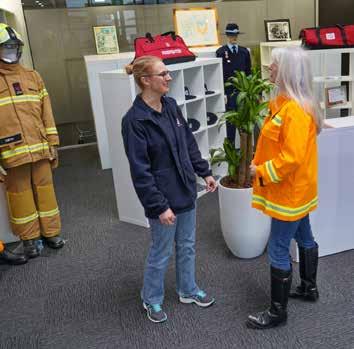
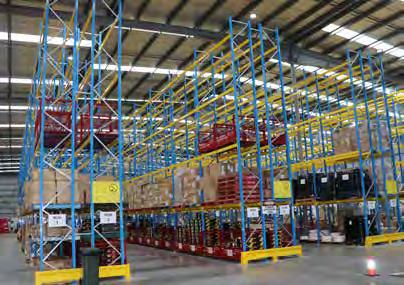
Lessons Management Centre
lessons-management-centre@cfa.vic.gov.au
The importance of debriefing
Debriefing is a key component of post-incident activities and has been used widely in CFA for many years. Debriefing also helps us see wider trends and identify better ways of working. Given the level of operational activity this summer across the state, it’s particularly important to collect information. Debriefs identify key feedback (called observations), learning opportunities and good practice. We use this information not only in CFA, but also across the emergency management sector to ensure learning and improvement occurs. During debriefing individuals or groups reflect on their experiences and explore the lessons from the experience in a safe environment. Debriefing includes: • i nformation gathering – capturing observations from assurance activities and individual observations for review • identifying lessons and trends – what we can learn from you and what you can learn from everyone else • i mprovement/change – identifying what needs to be learned and checking that change has occurred. • learning lessons – sharing lessons learned, outcomes, changes and improvements. Debriefing should be guided by the following principles to ensure the process stays positive and constructive: Learning focused: Focus effort on learning and improvement activities that explore what went well and learning opportunities. System focused: Examining systems of work rather than individual performance. Adding value: Providing evidence-based information for the agency. Minimising burden: Using existing mechanisms to capture data where possible. Trends-based: Using multiple information sources to identify lessons. Future focused: Explore events to identify aspects to sustain and areas of improvement. Consistency: Using consistent processes, tools and themes to enable trends analysis across events and experiences.
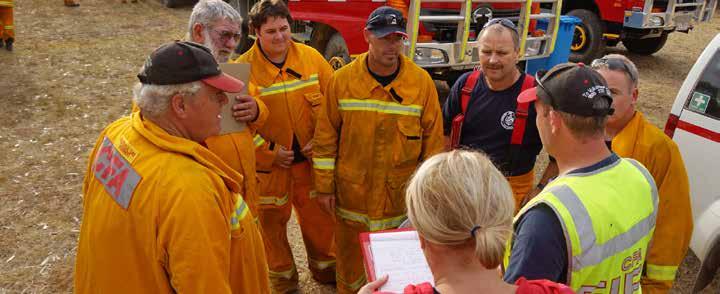
The outcomes of the debriefs will inform the ongoing cycle of learning and improvement within CFA and the sector by validating and evaluating existing doctrine, arrangements, policy, procedure and incident/emergency management application. The outcomes will provide evidence to inform a range of activities including training, exercising, briefings and numerous products as shown in the diagram below.
Incident(s)/ Events
ASSURANCE AND LEARNING ACTIVITIES
Reviewing
Debriefing
Monitoring
Individual Observations LOCAL THEMES
Analyse for local trends Assess for local action
STATE REVIEW TEAM
Analyse for state level/ multi-agency trends and lessons Assess for learning and improvement opportunities
Change/Improvement LEARNING PRODUCTS
Exercise
Multimedia
Narrative
Case study
Report
lnfographics
Implementation Plan
IDENTIFYING LESSONS LESSONS MANAGEMENT LEARNING LESSONS
We know that doing debriefs so soon after the recent fires will place additional burden on already exhausted CFA members, but the key to real improvement is conducting debriefs as soon as possible. Throughout the state numerous debriefs are being conducted until May 2020 and we encourage the brigades, strike teams, IMT personnel, districts, groups and regions to participate. Ask your brigade, district and region what they are planning. Debriefing activities will be undertaken through various processes, including face-to-face debriefs, online surveys or individual input, so if you have something to share please put your hand up. If you want to give your observations before the debriefs go to: www.surveymonkey.com/r/2KD9CCW You can also scan this QR code for the survey: All information collected will be shared with your district/region for analysis.
Fatal Pimpinio bus crash
Introduction A bus driver was killed and several passengers injured when a bus collided with a truck’s dislodged trailer on the Western Highway in Pimpinio last year. There were 44 passengers on board when it hit the B-double in the early hours of the morning, sparking a major multi-agency response led by Victoria Police. Although the accident ended in tragedy, CFA was proud of how our volunteer members came together to support the partner agencies in a multi-casualty event.
Incident overview In the early hours of 11 July 2019 a B-double truck was travelling along the Western Highway when its trailers dislodged and rolled onto its side. The two trailers were at right angles across the road blocking traffic in both directions. The driver attempted to warn oncoming vehicles but there was no lighting in the area. A Firefly bus crashed head-on into the B-double truck shortly after 2am. The front of the bus was impacted by the trailer’s wheel and undercarriage leaving the driver trapped. Horsham, Vectis, Dimboola and Dooen brigade members worked alongside SES, Victoria Police and Ambulance Victoria to rescue more than 40 passengers. The passengers were removed through a side window. Four passengers were airlifted to Melbourne and others received treatment at Horsham hospital. Despite paramedics’ best efforts, the driver sadly died while still trapped. Thanks to the driver’s selfless actions, however, he took the brunt of the impact and no other passengers were killed. The responding emergency services personnel came together and worked as one team. SES, CFA, Ambulance Victoria and Victoria Police members were in the bus and initiated the extrication of the passengers, ensuring it was completed smoothly, quickly and compassionately.
What worked well Child welfare: A young girl was extricated from the vehicle some time after her mother, both of whom were understandably distraught. A CFA member from Dimboola brigade provided immediate care and support for the young girl until she was reunited with her mother. Support: It was bitterly cold and the wind was blowing across the highway. All CFA and SES members quickly procured all available blankets, giving comfort and support to passengers in the makeshift triage on the roadside. The District 17 store was completely stripped of all its blankets by morning. Several passengers commented on the responders’ compassion and professionalism. Strategy: Crews discussed strategy in the truck while driving to the incident, which they found useful. When they arrived they parked a significant distance from the crash until they verified it was not a hazmat incident. Interoperability: The interoperability between the agencies was excellent – smooth, coordinated and given the circumstance, calm. An example was set from the top down, with senior members from Victoria Police, Ambulance Victoria, SES and CFA working together.
Emergency Management Team (EMT): With so many agencies on scene the CFA operations manager organised a series of EMT meetings. These worked well to create support. Member wellbeing: This was a difficult and emotional incident, but all CFA members performed well under trying conditions. They were well led by the two brigade captains who were on scene. In the aftermath of the event, peer support was activated for member welfare. Responders were encouraged to talk about their experiences and seek help if needed. Google Translate: The accident involved a number of nonEnglish speaking passengers. Google Translate helped emergency services personnel communicate with passengers despite the language barriers.
Lessons identified Conflicting information: In the initial response agencies received various inaccurate descriptions of the incident and were unable to confirm passenger numbers and how many were injured. Responders arrived at the scene unaware of passenger numbers and the seriousness of the incident. At one stage agencies were given a misleading estimate of multiple fatalities and 60 injured. They didn’t receive an accurate description of the incident until half an hour later. Bus access: Getting into the bus to rescue passengers was an issue. Police officers tried to use the emergency break tool but it broke. The other emergency access points were not safe, so until SES arrived responders couldn’t get into the bus. Passengers with fractured legs and other injuries had to exit by climbing down a ladder. Training opportunities: Brigades should consider training with other large brigades from other groups to get to know members and talk about strategies for large-scale incidents. Brigades should also check whether members need to discuss ladder storage as part of their training. One brigade had stowed its ladder upside down.
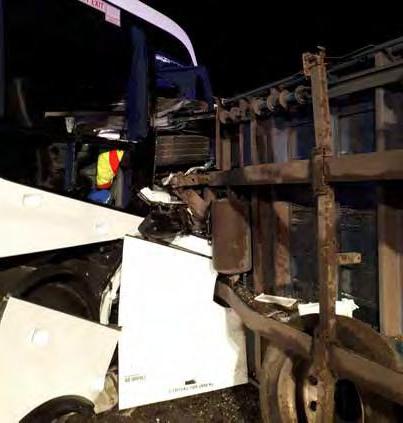
Safety: Crews need to flush out B-class induction hoses before storing them to avoid a potential splash hazard. They should also consider stowing foam induction hoses in lower lockers rather than at face height. Agency tabards: Not all agency personnel wore tabards at this incident which made identification difficult during the night. Rostered duty officer (RDO): Although an RDO is required to be available, no one was rostered on so the District 17 operations manager contacted the Assistant Chief Officer and took on the role.
Conclusion The preparation, response and recovery actions undertaken were carried out in a professional way. There was very good cooperation between the agencies and members adapted to a challenging environment. The whole event ran smoothly and calmly. Several passengers commented on the compassion shown by crews. All members performed their duties extremely well under the trying conditions. Firefly coaches thanked all agencies involved for their hard work during a difficult time.
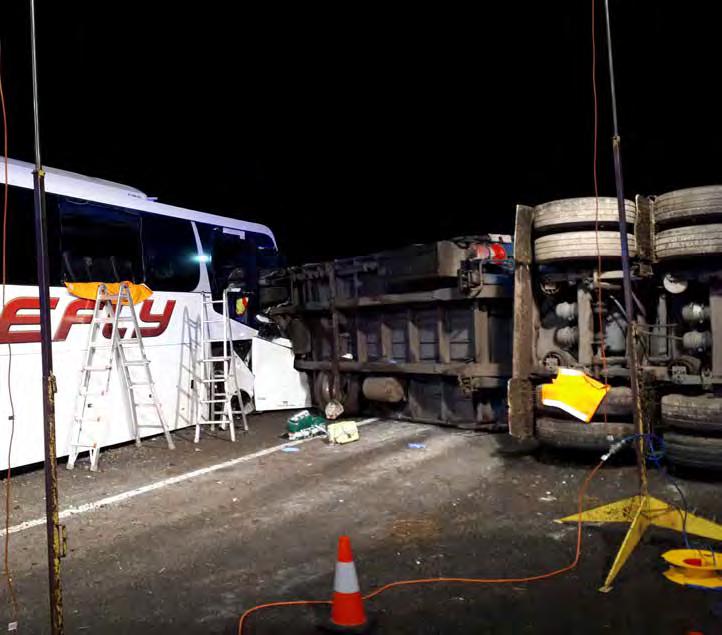
Questions for your brigade After reading this case study, consider what actions you would take. • Would you do anything differently if your brigade responded? • If there was a language barrier between you and the passengers, how would you communicate with them? What could you do if Google Translate was not an option? • How could you comfort distressed passengers? If you were in their shoes what would you find reassuring? • Have you completed training with other brigades to prepare for large scale incidents? If not, is anything preventing you from undertaking this training? How would this training benefit your response and teamwork? • It was difficult for responders to access the bus. What would your strategy be in this situation? • Following a fatal and traumatic incident such as this, what could you do to look after yourself and your crew members? Would you recognise the signs if you or another responder was not coping?
2018-19 east Victoria fires
In 2018-19 east Victoria experienced about 4,750 fire-related incidents which burned more than 260,000 hectares. The first fire began in early August in Gippsland. By January dry lightning created many new fires, some of which continued until the end of March.
Incident overview In September 2018 the Bushfire and Natural Hazards CRC (BNHCRC) advised that East Gippsland had experienced two consecutive years of record low rainfall during autumn and winter. The forests were significantly more flammable than usual and the area was rated ‘above normal fire potential’. Eight significant fires started between January and March 2019 in east Victoria. As expected, underlying dryness, heavy fuels, high temperatures, and strong and erratic wind conditions led to rapid and intense fire development. Rosedale-West Boundary Track South (4 January) The Rosedale fire burned more than 12,100 hectares over 153 days, destroying an estimated $22 million of plantation timber. Night-time fire bombing was used for the first time in Australia on this fire. Nunnett-Timbarra River bushfire (16 January) A lightning strike sparked a fire which burned almost 22,700 hectares over 139 days. More than 110 interstate and international firefighting crews were deployed to the incident. Thomson-Jordan Divide Road (25 January) Lightning strikes ignited three fires in the Thomson Catchment complex. Most of the 6,400 hectares burned were in Melbourne Water catchment areas which threatened water quality and supply from the Thomson River. The Mount Baw Baw Alpine Resort was closed and campers throughout the area were advised to leave. Walhalla-Stoney Creek Road (30 January) Two houses and three outbuildings were destroyed in the Walhalla fire, which burnt 8,700 hectares. The fire, which was caused by lightning, burned for 129 days and led to the closure of two schools, nearby roads and popular camping grounds.
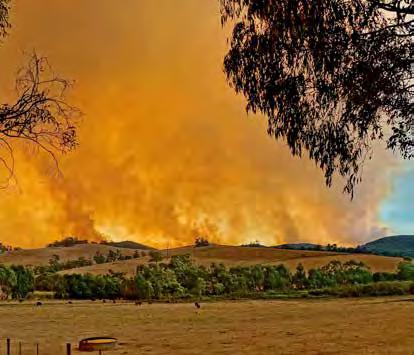

Dargo Complex (28 February) The Dargo Complex consisted of three individual fires started by lightning. The fires burnt 114,000 hectares and destroyed one shed during the 106 days before the fire was declared safe in June. Interstate firefighting crews assisted for almost three weeks. Mayford-Tuckalong Spur (28 February) The Mayford-Tuckalong Spur fire was another fire ignited by lightning. It was declared safe after 98 days, having destroyed 14,000 hectares. Campers were evacuated from camp sites on Kings Spur Track and walking track and roads were closed for an extended period. Bunyip State Park Fire/Gembrook-Helmet Track (1 March) Fire in the Bunyip State Park, again started by lightning, destroyed 29 houses, 67 outbuildings and burnt 15,600 hectares. Residents from Gentle Annie, Gembrook and Labertouche were evacuated and more than 100 people attended an emergency relief centre. The Princes Highway was closed for two days but traffic restrictions remained in place for several days after it reopened. Yinnar South-Budgeree (2 March) Two houses and three outbuildings were destroyed during an 81- day fire in Yinnar South. It burnt an area of almost 2,000 hectares. Despite the significant impact of the fire, the overall response was managed appropriately given the scale of the incident, unpredictable fire behaviour and extreme conditions experienced during the fire.
What worked well Emphasis on recovery: When a deputy incident controller was established early at an incident, with specific responsibilities, it was thought to be a positive initiative. This allowed solid planning for the return of displaced people and a broad understanding of the issues that were likely to be faced in the community as recovery commenced.
to change over crews when relief crews were available, keeping crews on the fireground for longer periods. It can be easy to dismiss the dangers of fatigue when battling an intense fire, but fatigue can cause you to make deadly mistakes. The impact of 17 hours without sleep is equivalent to the effects of a blood alcohol level of 0.05. Fatigue management must be implemented and taken seriously. Roster expectations: Some people on the EM availability roster were unclear about what was meant by being available. Expectations did not appear to be understood as they also differed between agencies. There seemed to be differences in understanding in the terms being contactable, available to start work and being on-call. Further education and information is required. PHOTOS: KEITH PAKENHAM AFSM

Hazardous trees refresher: Short hazardous tree refreshers were provided when mobilising crews to fires. These were particularly useful for crews who were responding from outside the Gippsland area to support operations. When working among trees the potential for trees to fall or drop limbs on crews and vehicles is a real threat. The use of a short refresher as a part of pre-deployment process was thought to be good practice. Teamwork: At several incidents team members had positive attitudes, were committed to the tasks and worked as a team. These positive working relationships helped the team complete their tasks successfully. However, there were also observations that some multi-agency teams didn’t support diversity and inclusion, making some team members feel uncomfortable or unwelcome. Teamwork is crucial in emergency situations. Use of live streaming: Community meetings were live streamed on social media for residents who couldn’t attend. This increased the meeting’s accessibility and was well received by the community. Live streaming was a better way to communicate then simply recording and uploading the meeting, which can be a slow process. Night-time aerial fire bombing: At these fires, night-time aerial water bombing was deployed to the bushfires for the first time in Australia following successful trials in 2018. This new capability enables aircraft equipped with night vision imaging systems (NVIS) or night vision goggles (NVG) to assist ground crews for longer and when fire behaviour is typically less intense. It demonstrated that it was beneficial and that operations could be conducted in a systematic and safe way.
Managing concurrent emergencies: Managing concurrent emergencies places significant strain on agency resources, particularly when those emergencies have a significant duration. When facing these difficult circumstances agencies rely on sharing and having flexible resources to ensure risks are managed to achieve the best outcome. Changes to shifts and arrangements to address resource gaps is a short-term fix that can cause strain on resourcing capacity. Examples included changes to shift lengths (eg 14-hour shifts to cover night shifts), adjustment to rostered rotation lengths (eg from 7-2 to 5-1-day rotations) and the use of Class 1 resources for a Class 2 emergency. Incident management training: There weren’t enough adequately trained people in AIIMS and the various AIIMS roles to fill all the incident management team rosters or manage ICC facilities, particularly for campaign events or concurrent emergencies. Returning vehicles: There were challenges with resupply and recommissioning of firefighting vehicles. This was exacerbated when vehicles were not returned in a ready state (including incomplete logbooks).
Conclusion The conditions during the east Victoria fires were extremely challenging and placed a great strain on our resources. There are many positives which we can take from these events and all firefighters should be proud of their efforts. However, we can also use these incidents as an opportunity to learn from our experiences and improve our capability.
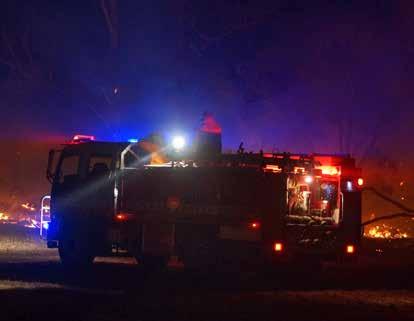
Lessons identified Fatigue management: Fatigue management was a challenge during these fires. At times there was a failure to factor in deployment times and commute lengths which led to shifts of more than 16 hours. It was also observed there was a reluctance
Structure Fire at Norlane
Summary Despite the best efforts of responding crews and sufficient resources for this type of incident, a house fire in the Norlane suburb of Geelong tragically resulted in the death of one occupant and severe injuries to another. A key contributing factor to this unfortunate result was the lack of working smoke alarms to alert the occupants, the rapid development of the fire to flashover and near full involvement of the house prior to the arrival of the brigade. Search and rescue operations were also hindered by clutter and hoarding in the house. A sequence of events led to a hose being contaminated with body fluids at the scene. When the hose was returned to the station a firefighter was exposed to the fluids. Quick action and expert advice mitigated the risk of illness from this event.
Incident overview On 13 September 2019, two Corio Fire Brigade pumpers and a Geelong pumper responded to a house fire in Norlane just after 6am. When they arrived the weatherboard house was already 90 per cent alight and the flames were spreading to the neighbouring house on the north side. This was quickly extinguished and damage to the neighbour’s house was contained to the external weatherboards. The front windows were broken which indicated a possible flashover had occurred, and the crews were told someone was still inside. The fire had burnt through the fascia where the powerline and service fuse attached to the building, leaving a live wire lying on the ground. With no fuse puller currently available to them, the team could not move the wire. A firefighter stood next to the hazard to prevent anyone from walking over it. The lack of a fusepulling kit with insulated poles prevented the first crews on scene from moving the wire to a safer location. While their colleague guarded the live wire, two teams donned breathing apparatus (BA) and entered the house. The first team entered through the window in the front living area, the room where the fire was thought to have started, and the second team entered from the back. Inside the house visibility was “pretty much zero” because “the smoke was really thick.” The clutter in the house – which scored very high on the hoarding scale – added to the difficulties. Crews used thermal imaging cameras for navigation and made their way to the bedrooms where they’d been told the person was. The Geelong pumper arrived with a fuse pulling kit a few minutes after the first crews. Firefighters moved the live wire to a safer space – which they cordoned off with traffic cones and drop pulled the fuse of the neighbouring house. Concurrently, the primary search (BA team two) quickly found a man in the backyard who had escaped by himself. He suffered from severe smoke inhalation and burns. He told firefighters that his mate was still inside in the front of the house. At this point the first BA team were still actively searching the front bedrooms as they were told by neighbours that they believed there was someone in that location. The crews searched the bedrooms again but there was no one there. They again asked the rescued man about his friend and he said he was in the front room. A firefighter grabbed his torch and shone it through the smashed living room window, crouching down to see below the smoke 40

level. He spotted a badly burnt man. It was clear that the man was deceased. The firefighter radioed the BA teams who were still searching for the man. They made their way to the living room to help extinguish the fire and locate the body. The crew in the living room then focused on scene preservation, setting up the area so that nothing was disturbed too much for the subsequent fire investigation to take place into the origin and cause of the fire. The police, who were at the incident, had briefed the crews about minimising disturbances to the scene. The crews tried their best to black out, but because of the clutter it became clear they couldn’t put out the fire without disturbing the scene.
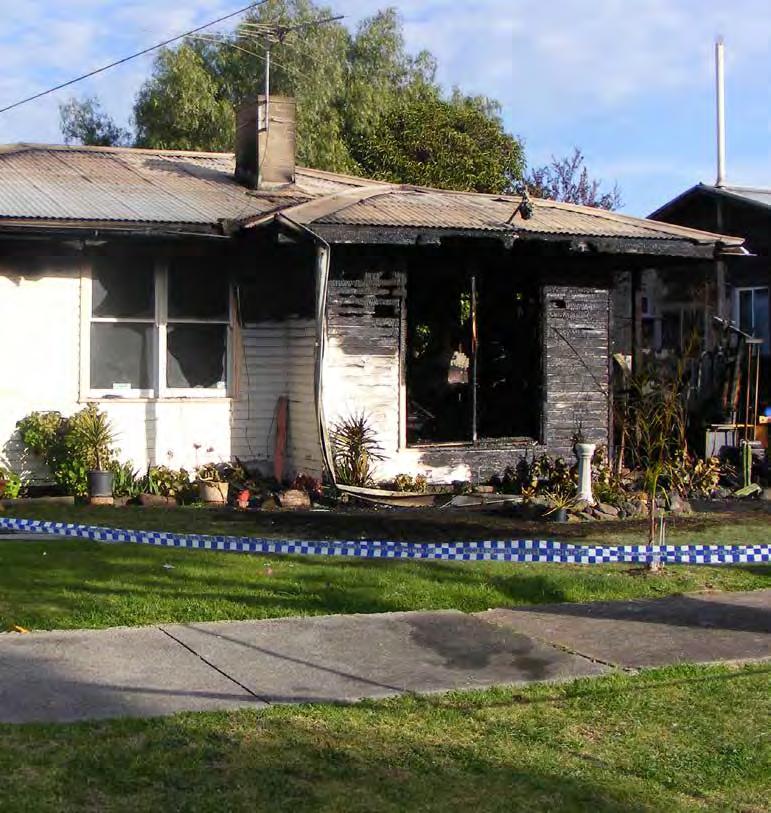
They discussed this with police and found a solution. Firefighters took a series of photos themselves – which they showed to the police for approval. With photographic evidence of the scene the firefighters started blacking out properly. When they had finished they began to give their statements to police and pack up. The burnt victim was not retrieved by firefighters. He was left in situ as directed by police. This meant careful hose management while still extinguishing the fire. During the firefight a length of hose touched the dead man and was potentially contaminated with his body fluids. The length of hose was cut off so it could be decommissioned and properly disposed of. The crew had intended to bag the hose but because of a set of circumstances the hose wasn’t bagged and was left at the scene. Several days later a well-meaning council worker found the hose and returned it to the fire station. The firefighter who greeted them had not responded to the Norlane fire, and took the hose from the worker while not wearing gloves. When he told the other firefighters about a returned hose, they realised he had handled the potentially contaminated one. They told him to wash and sanitise his hands, which luckily had no cuts, abrasions or open wounds. Staff members wearing gloves disinfected any surfaces that had been touched by the hose or their colleague. The hose was
placed in a biohazard bag and placed in the biohazard bin. The brigade also contacted the council to alert the worker who had handled the hose. In line with standard operating procedures, the on-duty CFA medical officer was contacted, and they advised that it was highly unlikely contact with the hose would have resulted in contamination. The firefighter had no open wounds and, given the length of time between the fire and the return of the hose to the station, any microbes or viruses initially present would have died. A joint fire investigation was conducted by Victoria Police, Forensic Services and a CFA fire investigator into the origin and cause of the fire. There were no working smoke alarms located during the investigation. One smoke detector was located on the floor in the hallway, and there was no battery inside it rendering it inoperable. It is believed that hoarding contributed to the high fire activity.
What worked well The firefight: Crews were fully committed to the objectives when faced with a difficult situation and with the pressure of knowing the occupant or occupants were still inside the burning building. Safety was a high priority and size-up and RECEO were closely followed. Peer support engagement: The rostered duty officer (RDO) notified the OIC of the incident to ensure that firefighters involved in the incident were supported when required. The RDO placed the welfare of personnel as a high priority. District 7 community engagement: The District 7 Community Safety team had visited the house two weeks before the fire and offered to check and install smoke alarms as part of the district’s wider campaign to identify and support at-risk residents. Sadly, the occupant declined to let the crew in and said they had two working smoke alarms. This was not the case. Members of the Community Safety team did everything they could to support this member of the community. Other houses took up this offer. Inter-agency cooperation: Firefighters were briefed by the police and prioritised scene preservation after search and rescue was completed. When it became clear it would not be possible to completely extinguish the fire without disturbing the scene, the firefighters worked above expectation with police to find a solution that addressed both of their needs (extinguishment and scene preservation). Police, Ambulance Victoria and the power company all arrived in a timely manner.
Lessons identified BA bracket issue: The second pumper was a service exchange vehicle (a spare). The crew who received the spare noticed it had a faulty BA bracket. This was reported and repaired. However, on the way to this incident the BA bracket didn’t work again, and quick-thinking crew donned BA from the pumper’s external locker storage instead of inside the cabin, reducing any delay in fighting the fire. Contaminated hose: There was a communication breakdown that led to a biologically-contaminated hose being left at the scene, and this later led to a potential contamination of personnel and fire station areas. The hose should have been bagged at the scene and removed. No one person was to blame for this unfortunate situation. Human error is sometimes unavoidable, though you can help prevent errors by being diligent, by doublechecking and by maintaining situational awareness until you leave the scene. Information confusion: VicFire informed the crews that one person was trapped. There was some confusion because crews found one person in the backyard and later found out from this person that there was another person inside the house. It is rare for the information provided by VicFire from the initial callers precisely match what is occurring on the fireground. At this fire the incident controller employed continual size-up and continually checked facts to update their situational awareness. Live wire: Due to the current project rollout, only one of the three responding trucks was carrying a fuse pulling kit. Needing this equipment is common with homes and power supplies of this age and type, and in this case not having the kit caused a delay in completing a size-up. They had to ensure the area surrounding the live wire was restricted and the crews could safely enter the structure. This issue will be resolved following the completion of the rollout of training and equipment for electrical safety and fuse removal. However, this risk will always be present in this type of environment and must form part of the continual size-up considerations of incident controllers. Smoke alarms: There’s no guarantee that a working smoke alarm would have led to a different outcome for the two occupants, but it is a possibility. This story highlights that some members of the community continue to live in houses without working smoke alarms. We must continue our efforts to engage with different stakeholders in new ways to address this issue and end preventable house fire deaths.
Conclusion This was a complex fire scene with the added pressure of ‘persons reported’. Crews performed bravely, safely and appropriately and dealt with the issues that arose. Despite their best efforts there was a loss of life. In sharing this story those involved in the incident hope everyone can learn from their experience.
Questions for your brigade After reading this case study, consider the actions you would take. • Would you do anything differently if your brigade responded to a similar incident? • H ow would you undertake a risk assessment? • W hat process should you follow if you have suspected contaminated equipment? Review with your team the policy regarding contaminated items. SOP11.08 – Sharps, syringes and contaminated products - Disposal of: www.members.cfa.vic.gov.au/mycfa/ Show?pageId=displayDoc&docId=002983 Bulletin 004/2017: Interim Contaminated PPC Laundering (Decontamination) Protocol: www.members.cfa.vic.gov.au/mycfa/ Show?pageId=displayDoc&docId=028181 • Are you working with your community team to identify your community risks? • Are you aware that you can report high levels of clutter to CFA?
For more information go to www.members.cfa.vic.gov.au/mycfa/Show?pageId=hoarding www.members.cfa.vic.gov.au/mycfa/ Show?pageId=displayDoc&docId=028949 This case study was developed from the after-action review that was completed by the responding crews who wished to share their experience. If you have any lessons to share, contact Lessons-Management-Centre@cfa.vic.gov.au Thank you to the Corio crews.
Smart alerts
Volunteers will soon have free access to a new app designed to help them respond more effectively and efficiently to fires and incidents. The development of the new Supplementary Alerting Service (SAS) for CFA, SES and Ambulance Victoria members is well advanced with the new app expected to be released mid-year 2020. The SAS application is being developed to work alongside CFA’s existing pager network Emergency Alerting Service (EAS) to provide improved performance and reliability. The app will support members responding to incidents by giving them access to more detailed information including the ability to see who’s turning out and a number of their competencies relevant to that response. Additional features will include chat functionality, dashboard reports, access to pager message history and robust privacy protection measures. Operations Manager – Operational Communications Jason Lawrence said the integration of the EAS and SAS would meet the needs of members. “The SAS app will provide a common platform that is freely accessible to all our

people and will be used by the agencies we work alongside every day,” Jason said. “The EAS will still be the number one means of communicating emergency callouts and dispatch because of its reliability, so members will be still expected to carry and use their pagers. “Both pagers and the SAS app have an important place in providing an efficient and effective service to the communities we serve.” The development of the app included workshops with key stakeholders including volunteers to determine the requirements of the app. More than 1,750 volunteers also had their say about the design through a survey, and this feedback helped to further refine its look and feel. Developer Ernst & Young has tested multiple prototypes to come up with the end design and is currently working on the final stages of development and testing. A significant amount of work is also underway to integrate the app with our systems, the EAS, and SES and AV systems.
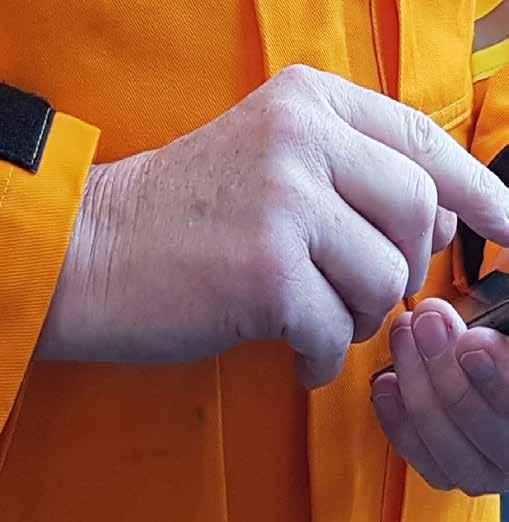
STORY SHAUNNAGH O’LOUGHLIN
LEARNING LESSONS FROM THE PAST
The outcomes of 130 years of inquiries, reviews and coronial inquests into emergency management and natural hazards have been captured in a new database compiled by the Bushfire and Natural Hazards CRC. Ensuring lessons from the past are not forgotten, the online Inquiries and Reviews Database gives emergency services the upper hand in learning from the past to create a better future. It contains more than 300 inquiries and reviews from all states and territories between 1886 and 2017, in addition to full recommendations from 55 inquires carried out from 2009 to 2017. You can carry out a custom search of more than 1,300 of these recommendations. The database can be used: • to compare equivalent recommendations between inquiries, themes and jurisdictions • t o track inquiries across jurisdictions, years and types • to download and work with all inquiries and recommendations to suit the particular needs of an organisation. CRC researcher Dr Michael Eburn from Australian National University was part of the research team that helped develop the database. He believes it will ensure emergency managers continue to learn from the past. “Inquiry recommendations get lost or distorted over time, so having a place where practitioners can find and search the actual text of inquiry recommendations will help with understanding the past to keep learning for the future,” Dr Eburn said. When searching bushfire inquiries between 2009 and 2017, most recommendations relate to ‘doctrine, standards and reform’, with 106 individual recommendations. ‘Incident management teams’ and ‘emergency management agency and authority’ also have many related recommendations, with 71 and 64 respectively. CRC Research Director Dr John Bates said the database was an accessible resource for practitioners. “The database’s multifunctionality is really what makes it exciting for researchers and agency personnel alike,” he said. “Combining past lessons learned and recommendations from major inquiries into bushfires, flooding and cyclones in one place gives a holistic overview for emergency management in Australia.” Explore the Inquiries and Reviews Database at bnhcrc.com. au/utilisation/ddr.
HEALTH MATTERS
Healthy eating initiative

Each year CFA’s Health Services offers different health education workshops for the Healthy for Life, Health Watch and Health Ready Programs. Based on feedback from various program participants the educational workshop for 2020 will focus on healthy eating.
The Healthy Eating Initiative is an evidence-based education resource for all CFA members. The session focuses on population nutrition guidelines sourced from Eat for Health Victoria, Nutrition Australia, The Dietitians Association of Australia and Better Health Channel Victoria. The initiative covers the Australian dietary guidelines, carbohydrates, diet and disease, and healthy eating myth busting. Participants receive the Healthy Eating Initiative booklet and have the opportunity to take part in practical learning activities that increase knowledge and individual skills to help people eat more healthily. For more information about the Healthy Eating Initiative, Healthy for Life, Health Watch or Health Ready Programs, go to the Health Services page on members.cfa.vic.gov.au.
Mental health training for leaders
Almost half the people in Australia will experience a mental health condition in their lifetime and everyone will be impacted in some way, so it’s important to talk about mental health. None of us is immune to impacts on our wellbeing – we’re all human after all – and our people, particularly those in first responder roles, are impacted more than most. CFA is delivering two new evidence-based mental health training programs: The Working Mind First Responders and Mental Health First Aid. Initially a pilot project, these programs aim to support a culture of openness and care, reduce stigma, and support wellness by providing resources for self-awareness and early intervention. Although the training is aimed at leaders, and the target audience is brigade management team members at Class 3, 4 and 5 brigades, we encourage all interested members to nominate as they will be enrolled if there’s space. A team leader at CFA Burwood headquarters thought the training was worth every minute. “I thought the Working Mind First Responder training was absolutely fantastic,” they said. “The common language it creates that allows us all to check in with each other at all levels within our team, looking out for each other in the mental health and wellbeing space, is everyone’s responsibility.” “The Working Mind First Responders course was good and gives brigade leaders the tools to help members in their brigade and to 44
support them in their time of need,” Second Lieutenant of Ararat brigade Jeydon Nancarrow said. We started rolling out these courses to both staff and volunteers across the state in 2018 and during 2020 we will run many more sessions especially for volunteers. By completing these courses we hope people will: • see their own wellbeing improve by enhancing their selfawareness • feel more comfortable about getting help when they realise they need support • feel more comfortable supporting their teams and crews. “Mental Health First Aid was a full-on course but it’s so important and relevant,” a member from District 15 said. “It’s given me the confidence to provide initial support to my mates who might be experiencing a mental health problem or emergency.” District 7 member Olivia Psaroudis found the Working Mind First Responders course really powerful and she benefited from talking to colleagues during the session. “It felt really good to be able to sit down with co-workers and discuss some really tough topics and being able to learn that perhaps one’s experience with mental health is completely different to another’s,” Olivia said. “It was perfect timing as I was battling with some of my own mental health issues at the time of the course and it was really special to be able to discuss so openly things we can do and signs we can look for when it comes to one’s mental health. I think it really was the perfect reminder that we are all only human.” To take advantage of the opportunity to participate in these training sessions keep an eye on the Learning Hub at https:// learninghub.cfa.vic.gov.au/pages/login.jsf for a course near you in 2020. To find out more email wellbeing@cfa.vic.gov.au. These courses are funded under the Fire Services Statement, the State Government’s $60 million investment in the Victorian fire services.
Peers on deployment
During this challenging fire season our firefighters have sustained an incredible work rate both in Victoria and interstate. But as committed as our firefighters are, they can’t do it alone. One of the many groups of people supporting their frontline efforts are our peers. When on deployment to a major fire, peers can carry out numerous invaluable duties: • V isiting local brigades and speaking with captains to help them understand the work of the Peer Support Program and to give peers insight into what support is needed. • P honing strike team members to allow for follow-ups to occur and referrals to other peers or agencies to be made. • P roviding support to everyone working in an ICC. • N etworking with community liaison members and members of other emergency services organisations at the start and end of each day. • L iaising with members of the community through formal and informal visits. • C reating and strengthening links with communities and brigades through sharing meals and enjoying the hospitality offered. Pam Young, a peer from district 12, gave the following insights from her time deployed to the Tallangatta staging area in north-east Victoria. “Being in the same place for the whole deployment was valuable,” Pam said. “It meant people could see a familiar face rather than a new one each day. “Walking up to the main street, I not only gave a smile and hello to locals but also to those in the Parks Victoria and DELWP offices and the town’s relief centre at the hall. “I was there when needed by CFA, FFMVic, SES, St John Ambulance (who carried out first aid at the staging area) and the catering team who put in long hours. I also often consulted the staging area manager to source something that was needed and to find out contact details – knowing who to go to is invaluable. “I was able to acknowledge the work being done by everyone. Whatever their role, what people were doing was crucial and important. Everyone needs someone to talk to without being judged for how they feel. As a peer, when this happens I’m doing my job.” Hilldene brigade member and peer Lesley Read (pictured below with District 24 peers Greg Dale and Penny Perfrement) was deployed to the Hawksbury region of NSW. “Our days started at the staging area and then we travelled around and chatted to as many of the crews as possible, keeping an eye on everyone,” Lesley said. “As the trucks arrived back at the staging area at the end of the day we talked to each crew to check that everything was OK and to find out if there was anything they needed. “We had a couple of hospital trips, chased up some speciality needs like gloves, sunscreen, hydration sticks, and sorted out some funny situations like ripped pants and the need for sugar-free lollies. We tried to keep things light where we could and hopefully everyone felt they could come to us. “I was lucky to have a great team. We worked as one. All three of us had similar ways of handling situations as they came up; nothing was too hard or too small.”
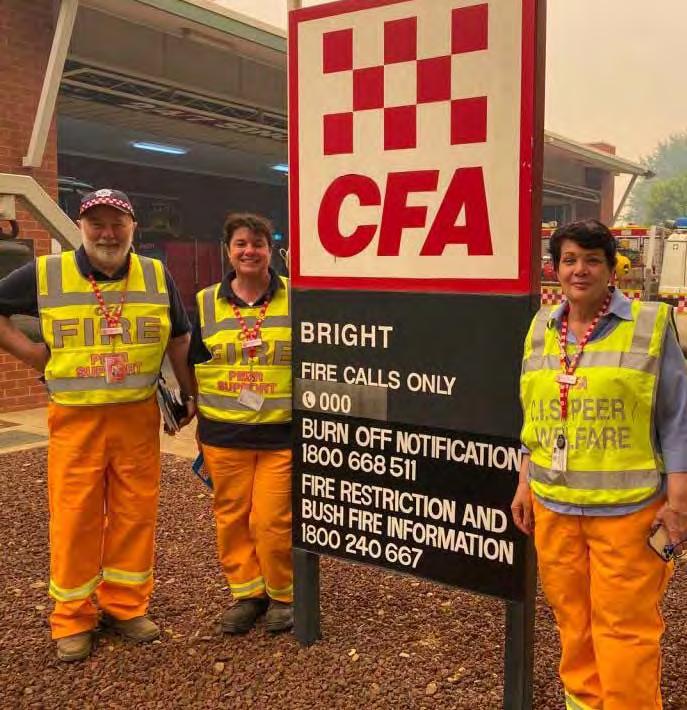
CFA PEER SUPPORT UP TO 29 FEBRUARY 2020 Average deployment time per person: 5 days Total peer contact hours: 6,192
NSW Deployment: 10-30 November 2019 Peers deployed: 30 Clinicians deployed: 0
VICTORIA Deployment: From 1 January 2020 North-east Peers deployed: 24 on 28 individual tours Clinicians deployed: 3 Gippsland Peers deployed: 47 on 55 individual tours Clinicians deployed: 8










